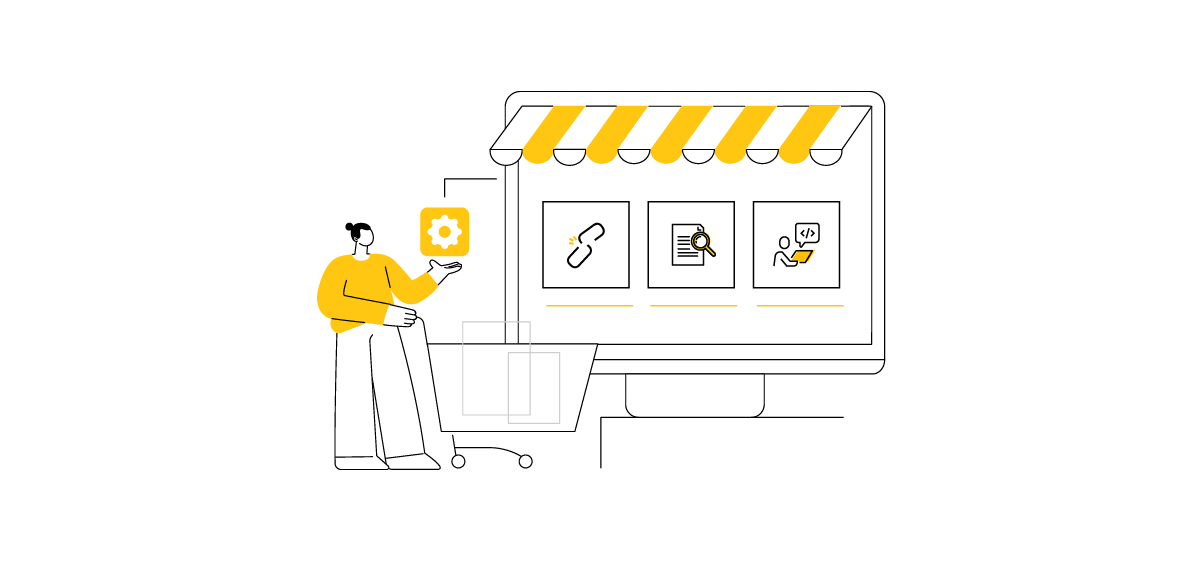
Table of Contents
What is the Spring Framework?
Spring is a popular Java framework for developing web applications that emerged to simplify the development of enterprise software solutions at a time when Java EE (Enterprise Edition) dominated the market. It is based on Java, Kotlin, and Groovy. The first version was written in 2002 by Rod Johnson and released in 2003 under the Apache 2.0 license. It has since evolved and adapted to changing software development requirements. Nowadays, it is known for its comprehensive feature set and unparalleled flexibility. According to the Stack Overflow Developer Survey 2021, Spring Framework remains one of the most popular Java frameworks, with over 60% of developers positive about working with it. The active and engaged Spring Framework community has resulted in over 300 million downloads from the central Maven repository.How the Spring Framework works and its most important features
Early iterations of the framework introduced concepts that have become its pillars. Spring provides a host of features to help build robust and scalable applications. Primary among them are:- Inversion of Control (IoC) – IoC reverses the traditional application control flow, where the framework creates and manages objects (beans) and their relationships. The IoC container creates objects, connects them, configures them, and manages their entire lifecycle. It receives instructions on what objects to create, configure, and assemble by reading the provided configuration metadata represented by: XML, Java annotations, or Java code.
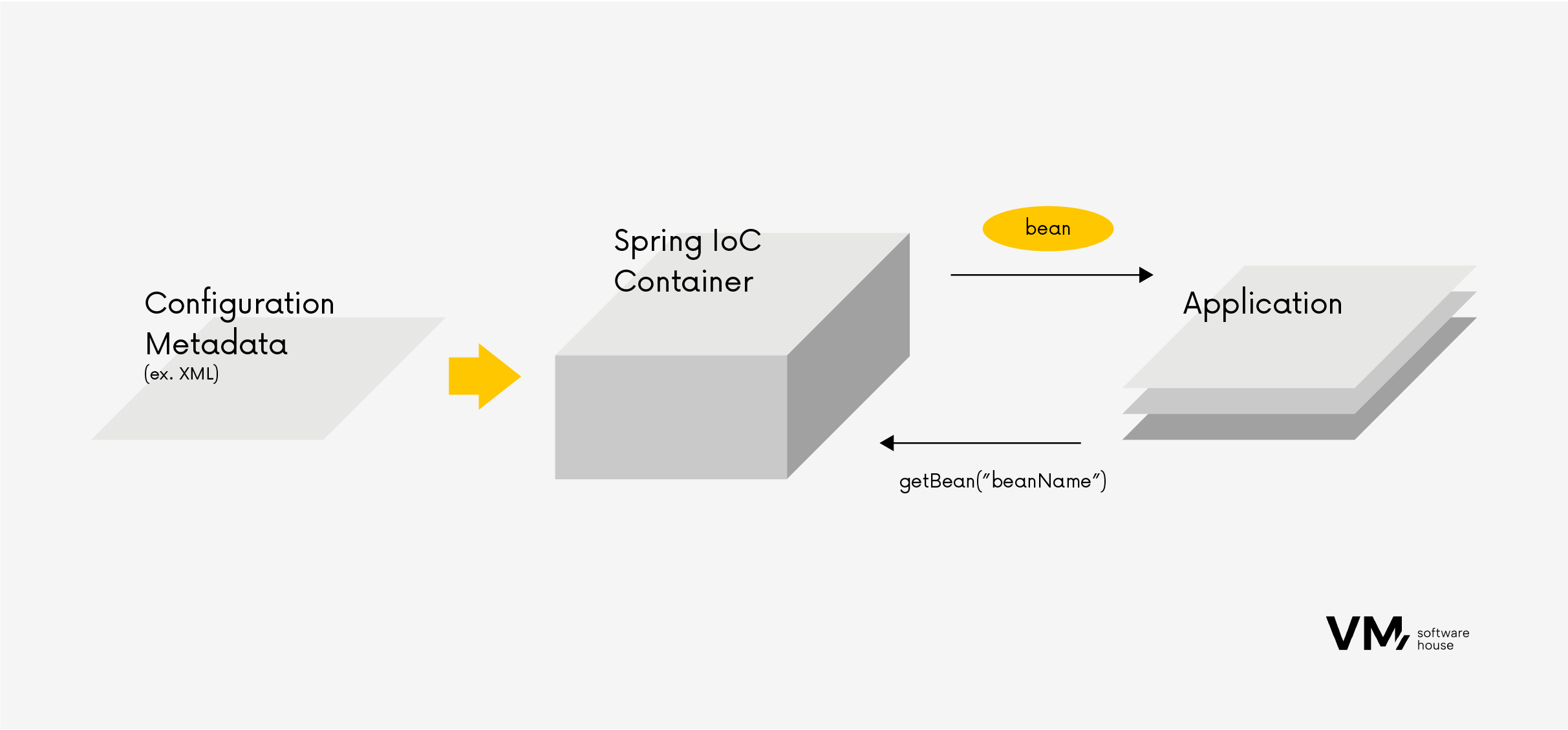
- Dependency Injection (DI- Dependency Injection) – DI is a key aspect of IoC, in which components or beans declare their dependencies, and the framework injects them at runtime. This eliminates the need for manual object creation and tight coupling, making the application more modular and easier to test.
- AOP (Aspect-Oriented Programming) – AOP allows the separation of common parts, such as logging, transactions, or security, from the main application logic, improving the code’s modularity and readability.
- Ecosystem of Modules – The entire Spring Framework ecosystem is divided into about 20 modules, each containing dedicated functions for itself. Developers can choose components that align with their project’s requirements, which fosters a more customized and efficient development process.
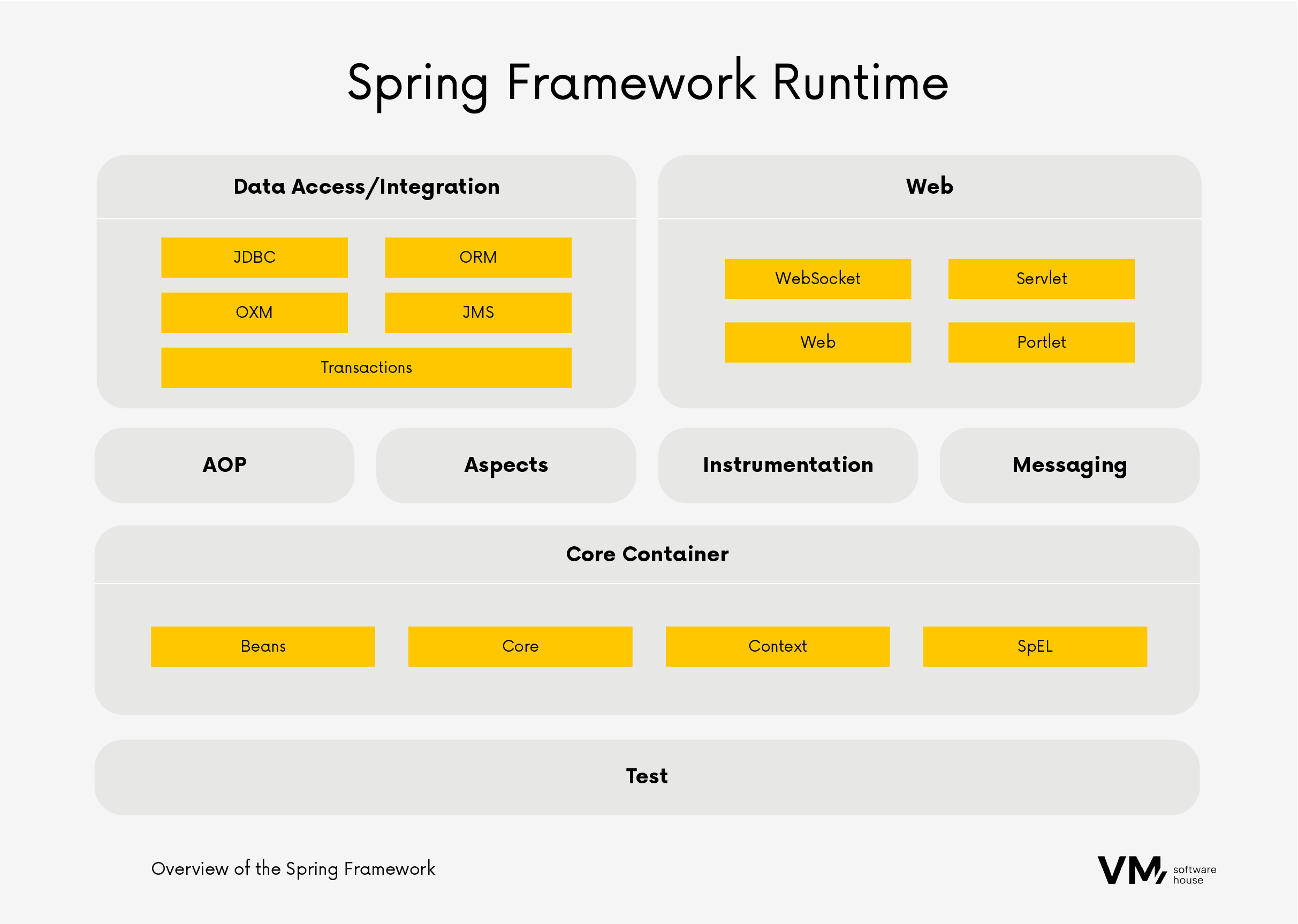
Other popular Spring modules include:
- Spring MVC – Divides the application into three components: Model (business logic), View (user interface), and Controller (handles user requests). This separation increases code maintainability and allows for flexible UI updates.
- Spring WebFlow – Based on Spring MVC, developers can implement web application flows. The main advantage of this module is saving web application states with controlled behavior.
- Spring JDBC – Spring Framework offers support for database access through Spring JDBC and Spring Data modules, making it easier to work with databases without writing standard code.
- Spring Security – The Spring Security module provides comprehensive security features such as authentication, authorization, and protection against common security vulnerabilities.
- Spring Test – This is one of the modules that performs four main tasks: managing Spring IoC containers and caching them between tests, injecting dependencies for test classes, managing transactions tailored for integration tests, and providing a set of base classes to streamline the creation of integration tests.
Spring – advantages and disadvantages
Spring provides us with many ready-made packages and libraries for basic configuration. We don’t have to focus on the technical processes but the business process from the beginning. BENEFITS- Flexibility and modularity
- Aspect Oriented Programming (AOP)
- Ease of integration
- A consistent way of accessing different data sources
- Security and authentication
- Lightweight and architectural flexibility
- Strong community support
- Used in various domains – from enterprise systems to web applications and microservices
- Reduction of repetitive code
- Simplified testing
- Time-consuming configuration. Working with Spring is more complex and prolonged than Spring Boot because Spring requires a long configuration from scratch for each project. This, in turn, requires more development time. Configuring Spring applications, especially in an XML-based configuration, often leads to extensive and complex configuration files.
- Managing the dependencies can become challenging, especially with a large number of libraries.
- Integration challenges: Integrating Spring with third-party technologies or libraries may require additional effort and configuration.
“Spring gives us additional tools, whether in the form of exposed metrics or a whole set of Spring Cloud modules, that makes it easy to work with microservices architecture. However, to make the application easily scalable, we can just as well write it in another programming language or pure Java without using any frameworks, and it too can be scalable. In my opinion, even the best framework in a poorly designed application will not make it scale well and meet the design requirements.” Damian Gadecki, Senior Software Engineer
When to opt for the Spring Framework?
A survey conducted by DZone found that 78% of developers who opted for the Spring Framework cited its ability to provide fine-grained control over configurations as the main reason for their choice. Its modular architecture, precise control over configurations, and deep integration capabilities make it an optimal choice for projects requiring a customized approach. Spring is often used in the following cases:- Web applications (Spring MVC and Spring WebFlux)
- RESTful APIs (Spring MVC or Spring WebFlux)
- Development of serverless and Microservices-based applications (Spring Boot, Spring Cloud)
- Data processing (Spring Batch)
- Integration and messaging (Spring Integration)
- Data processing and analysis (Spring Data and Spring Cloud Data Flow)
- Enterprise applications (Spring AOP, DI, and container management)
- Cloud native applications (Spring Boot and Spring Cloud tools)
- Development of applications with high-security requirements on the server side
- Asynchronous software development
- Creating an event-driven architecture
- Batch development for process automation
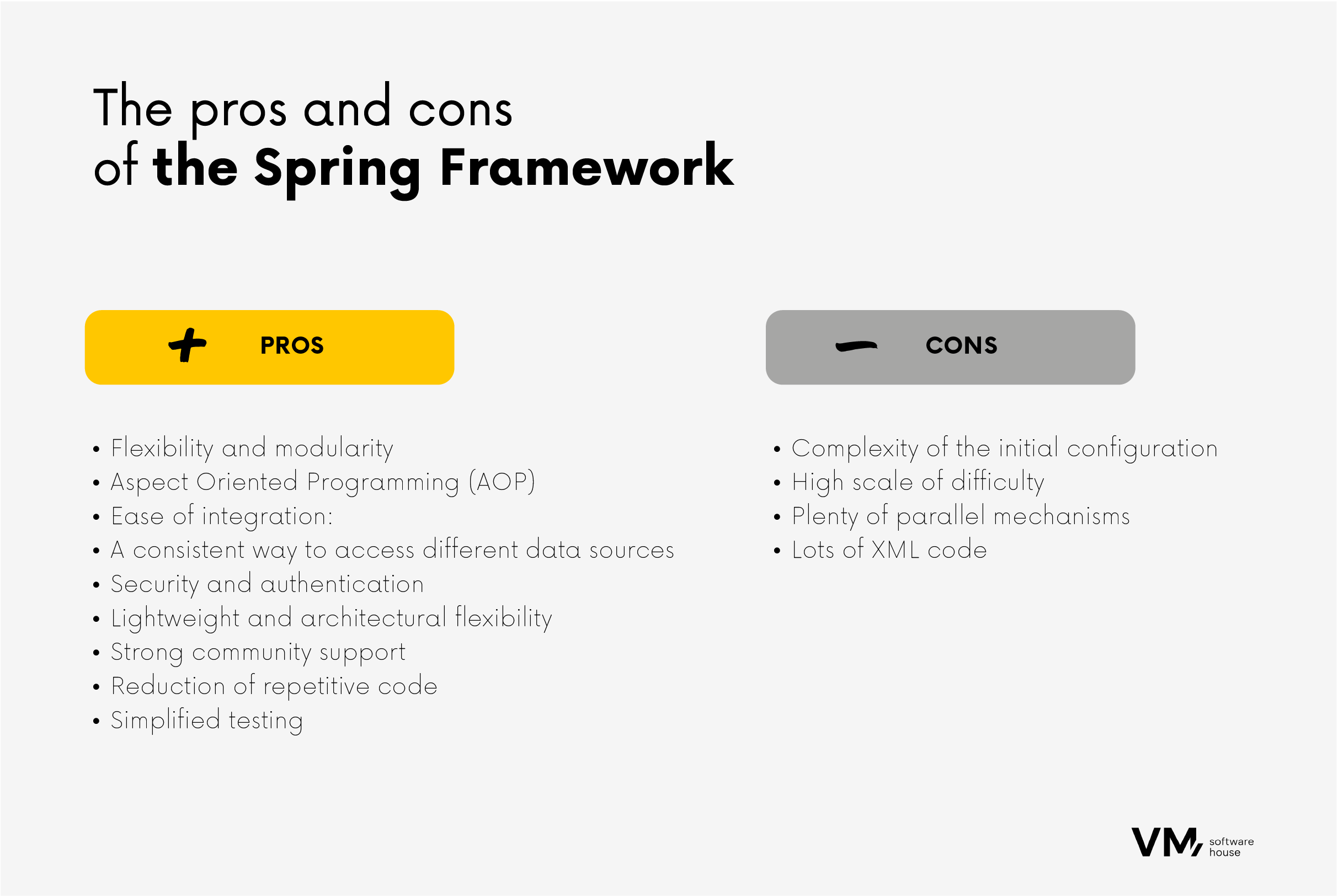
What is Spring Boot?
Spring Boot is an open-source Java framework developed in early 2013. It is based on the Spring Framework and aims to provide developers with a streamlined way to create Java applications with minimal configuration. While Spring focuses on providing flexibility, Spring Boot shortens code length by using annotation and template configuration to speed up application development. This helps create standalone applications with less or almost no configuration burden. According to JRebel’s 2021 report, 62% of respondents used Spring Boot as their primary framework, and nearly 50% of developers surveyed worked with microservices by default, for which Spring Boot’s architecture is ideal. In contrast, statistics from the State of Software Engineers 2021 show that 68% of developers consider ease of configuration a key factor in choosing a framework that aligns with Spring Boot’s strengths.Advantages of Spring Boot
Spring Boot equips developers with built-in features designed to reduce operational complexity. Automatic configuration: Spring Boot automatically configures components based on the dependencies present in the project. This greatly reduces the need for developers to configure settings manually.- Embedded servers: Spring Boot includes built-in containers such as Tomcat, Jetty, and Undertow. This allows developers to package their applications as executable JAR files for easy deployment and testing.
- Self-contained: Spring Boot applications can be developed as standalone Java applications with a built-in Web server, reducing the need to deploy the application in a separate container.
- Default settings: Spring Boot provides these settings for various components, such as database configurations, logging, and security. This speeds up development by reducing the decision-making process.
- Microservices: Spring Boot supports building microservices-based architectures. It provides functionality, such as Spring Cloud, for creating and managing distributed systems.
- Integration with the Spring ecosystem: Spring Boot integrates seamlessly with the broader Spring ecosystem, allowing developers to leverage existing Spring features and libraries.
- External configuration: configuration properties can be easily extracted from the application code, allowing changes to be made without modifying the application.
- Developer-friendly tools: Tools such as Spring Initializr and Spring Boot CLI streamline how Spring Boot projects are created, developed, and managed.
- Spring Boot Actuator: This module provides features such as health checks, metrics, and endpoint monitoring to manage and monitor applications.
- Easy testing: Spring Boot provides testing tools and frameworks that simplify the process of the writing unit, integration, and end-to-end tests.
Does Spring Boot have any drawbacks?
While Spring Boot provides numerous advantages, it is important to consider its drawbacks to make an informed decision about using it in a project. Here are some potential challenges as factors to consider:- High level of difficulty
- Overhead and complexity:
- Limited personalization
- Expanding dependencies
- Increased memory consumption:
- Performance Compromises:
- Unintended use of functions:
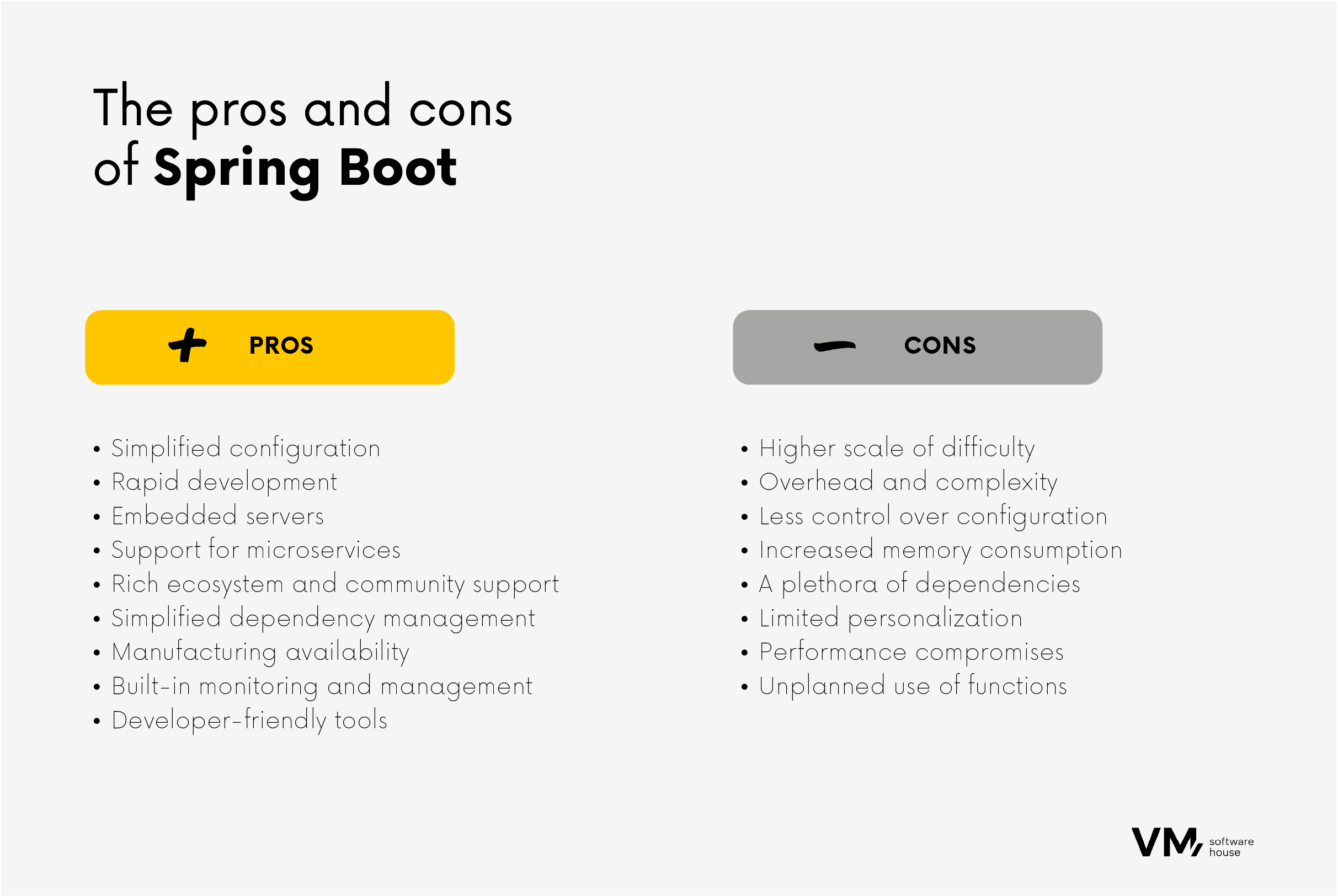
Spring Boot vs. Spring? Consider the needs of your project
The choice between Spring Framework and Spring Boot depends on various factors, including project complexity, requirements, speed of development, and deployment goals. The Spring Framework can seamlessly extend your Java programming skills, allowing you to take advantage of myriad data access, security, and other modules. Comparably, Spring Boot is simplicity encourages developers to move to the Spring ecosystem or those looking for faster results without sacrificing quality. In Java software development, choosing between Spring Framework and Spring Boot is similar to choosing the right tool for the job. It’s about aligning the DNA of the chosen framework with the DNA of the project. As an experienced Java developer, you must understand that your design perspective is paramount.“I believe that good projects use Spring wisely, meaning as little as possible. It’s about achieving such flexibility that if the customer decides they don’t want Spring in the project, we can easily change the technology, or if there’s a problem in Spring, then it’s important not to fight it for four weeks, but to get clarity and simplicity in the business code, in a clean programming language.”Spring is a powerful tool, but its usefulness depends on factors specific to the project context. If you need a consultation on choosing the right technology for your project, talk to our Java engineers. They will be happy to answer your questions and dispel any existing doubts.











